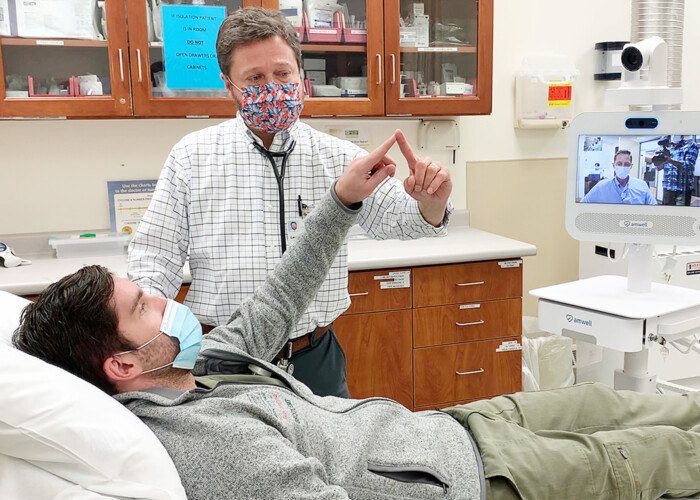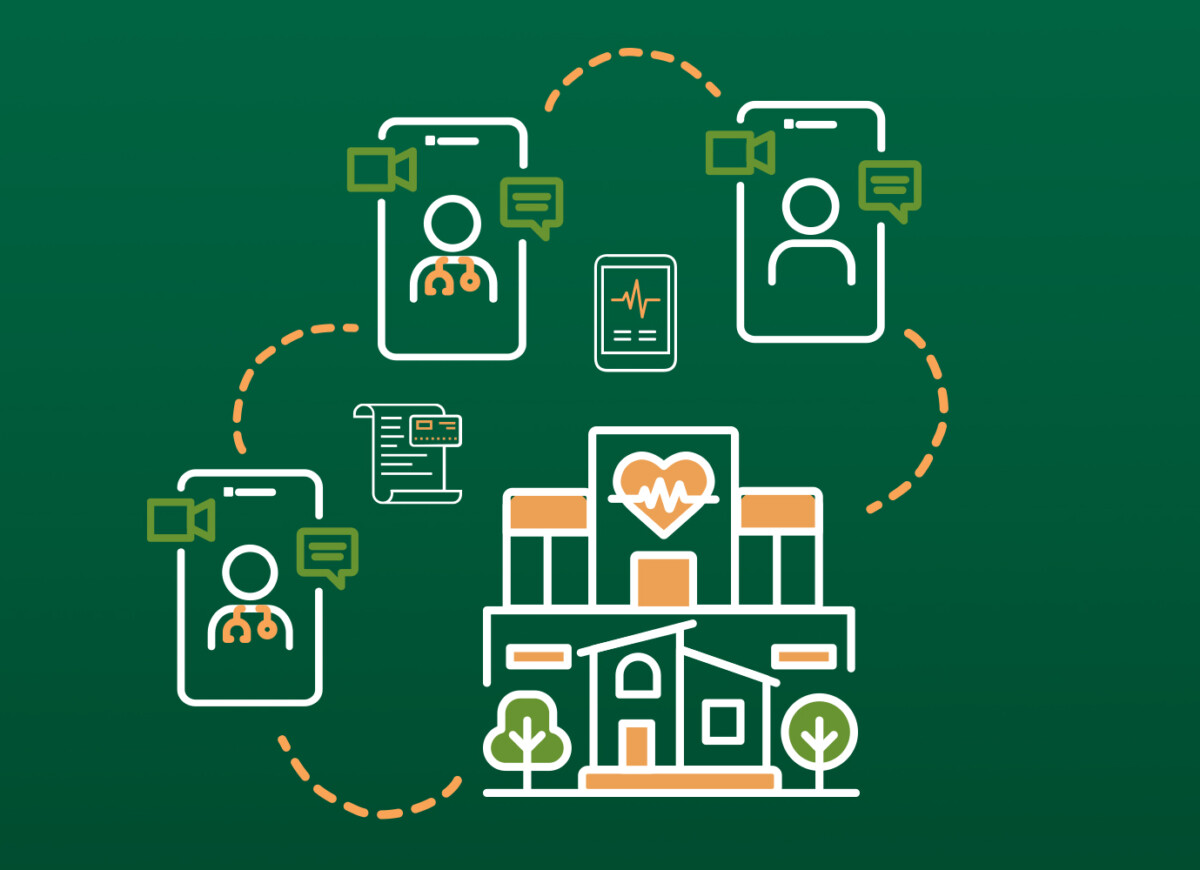
When Time is of the Essence
For stroke patients in rural areas, new technology can save a life.
Read story

In the case of stroke, every second counts. Stroke damage worsens quickly, leaving the medical team with little time to make critical decisions. At community hospitals like UVM Health Network – Porter Medical Center, where the closest stroke neurologist is dozens of miles away, the time crunch and pressure are even more intense.
Telestroke, a video and audio tool that connects stroke neurologists at The University of Vermont Medical Center to providers and patients at surrounding community hospitals, allows emergency department physicians across the University of Vermont Health Network to collaborate with stroke experts in real time when making critical choices.
Robert Pitts, MD, an emergency medicine physician at Porter Medical Center in Middlebury, says that access to Telestroke helps him make the right decision, at the right time.
Tissue plasminogen activator (TPA) is a treatment for stroke and can be lifesaving. It’s a powerful blood thinner that can break up an otherwise destructive clot – but it can also be dangerous. For about 6% of patients who need TPA, there are some really unfortunate side effects, so it’s not an option anyone would ever choose lightly.
Dr. Pitts
Dr. Pitts isn’t alone in his concern. “There can be discomfort in making the choice to administer TPA,” says Christopher Commichau, MD, one of UVM Medical Center’s three stroke neurologists. “It’s ideal if you have a neurologist, especially a stroke neurologist, at your side while you’re making that decision, and with Telestroke that’s now possible, even if the specialist is physically far away.”
Physicians say that the technology is already having a pronounced impact now that it is in use across all six UVM Health Network affiliate hospitals. “There are patients I have seen who probably would not have received TPA if Telestroke was not available, or wouldn’t have started receiving it until they arrived at UVM Medical Center,” says Fatemeh Sobhani, MD, a stroke neurologist at UVM Medical Center. “And we know TPA is effective, so it’s great that Telestroke is enabling greater, and safer, use.” Dr. Sobhani adds that many studies show that Telestroke technology helps eliminate treatment disparities between rural and urban populations.
The benefits of the Telestroke program extend beyond its value as a diagnostic and treatment tool. It has also streamlined the typically complicated coordination that stroke care requires. When a patient arrives at an emergency department with stroke symptoms, and is in need of neurointerventional care only available at UVM Medical Center, transportation and transfer arrangements can now begin immediately. This care coordination happens while the patient is receiving preliminary examination with Telestroke, so they’re ready for transport by the time the air or ground transport team arrives.
Colleen Bell, RN, a Clinical Quality Manager at UVM Health Network – Champlain Valley Physicians Hospital, highlights how Telestroke supports the quick decisions needed when time counts.
One time we had a hemorrhagic stroke patient who was on the helicopter being transported to UVM Medical Center 59 minutes after they came through our doors. If we were still coordinating all of this through a series of phone calls, it easily could have taken another 20 minutes to determine whether they needed to be moved to Burlington, and another big chunk of time coordinating their available transport options.
Colleen Bell, RN
For stroke patients who require a transfer from their community hospital to UVM Medical Center, being able to meet the stroke neurologist through Telestroke before their transfer can ease fears. “I think it helps create a positive connection for the patient during a very stressful time,” Bell says. “And seeing a familiar face or hearing a familiar voice when they arrive can potentially make things a bit easier for them and their family.”